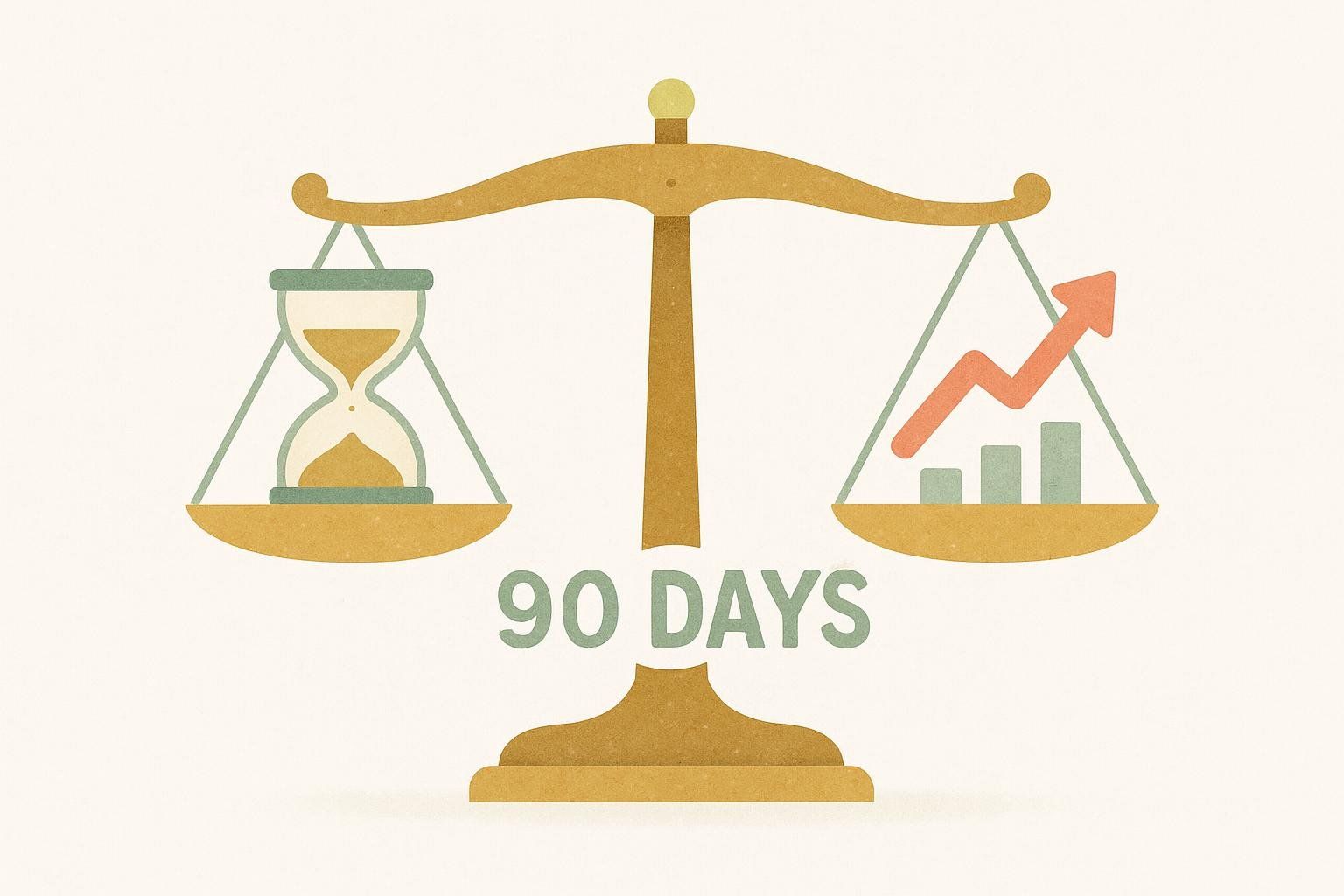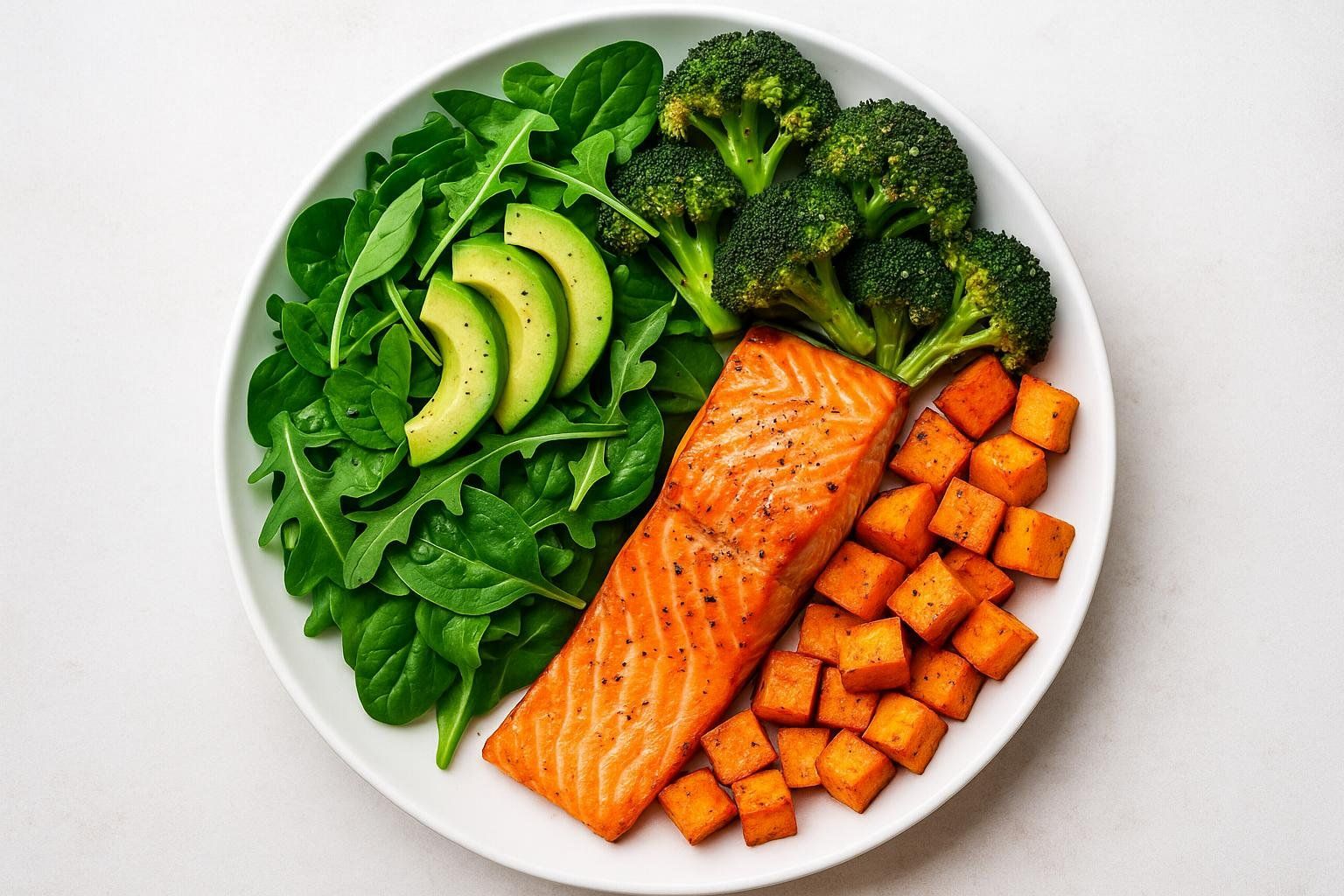The Ultimate 90-Day Transformation Guide

The Ultimate 90-Day Transformation Guide: Programs, Blueprint, and Tracking Tools
Primary keyword: 90 day transformation
Quick-Look FAQ
- Is a 90-day transformation realistic?
- What programs work best?
- How should I eat during a 90-day challenge?
- How do I track real progress—not just the scale?
- Can busy parents or professionals still succeed?
Why 90 Days?
Ninety days (roughly 12 weeks) strikes the sweet spot between long enough to see meaningful body-composition change and short enough to feel urgent and exciting. Research on safe weight-loss rates shows that shedding 1–2 pounds per week is sustainable—meaning you could reasonably lose 12–24 pounds in 90 days while preserving or even gaining lean mass with the right strength program (CDC).

But weight isn’t the whole story. A DEXA scan quantifies where those changes happen—fat mass vs. muscle mass vs. bone density—so you can celebrate each win with data, not just selfies. If you’re new to DEXA, here’s a practical guide to improving body composition that explains how to use scan data for smarter training and nutrition tweaks.
The 4-Step 90-Day Transformation Roadmap
- Compare programs and pick your lane.
- Follow the 12-week BodySpec Blueprint (workouts + habits).
- Fuel your body with an evidence-backed nutrition framework.
- Track the metrics that matter—DEXA, photos, and performance.
Let’s dive in.
Step 1: Compare the Best 90-Day Programs (Free vs Paid)
| Program | Cost | Equipment Needed | Coaching / Community | Ideal For |
|---|---|---|---|---|
| Darebee “90 Days of Action” | Free | Body-weight only | Forum | Beginners, home workouts |
| P90X (Beachbody) | One-time purchase or monthly streaming subscription | Dumbbells / Bands | App + on-demand videos | Intermediate, variety lovers |
| The 90DC App | Freemium (monthly subscription for Pro features) | Gym or home mods | In-app coach chat | Tech-savvy users who like streaks |
| Gymshark 90-Day Women’s Plan | One-time purchase | Dumbbells + resistance bands | PDF + private Facebook group | Female strength focus |
| Athlean-X 90-Day Playlist (YouTube) | Free | Minimal equipment | YouTube community | Visual learners, tight budgets |
Why this table matters: Instead of hunting down reviews, you can scan features at a glance and match them to your lifestyle and budget.
Tip: Regardless of the program you choose, schedule a DEXA scan before Day 1. Baseline data informs your calorie targets and macros.
Step 2: The BodySpec 12-Week Blueprint
Our evidence-based template layers onto any program. Think of it as the operating system that keeps you accountable.
Phase 1 – Foundation (Weeks 1–4)

- Movement Goal: 150 minutes of moderate cardio per week + 2 full-body strength sessions (CDC Physical Activity Guidelines).
- Habits: Sleep 7 + hours, drink half your body-weight (lbs) in ounces of water.
- Mindset: Track one win daily—consistency beats perfection.
Phase 2 – Momentum (Weeks 5–8)
- Strength Upgrade: 3 lifting days using progressive overload (add 5–10 lbs or 1–2 reps weekly).
- Cardio Shift: Introduce 1 HIIT session (20 min) to elevate VO₂ max.
- Habits: Meal-prep Sundays; log macros in a free app.
- Mid-Point Check: Optional DEXA at Day 45 to course-correct.
Phase 3 – Peak & Reassess (Weeks 9–12)
- Intensity Bump: 4 strength days split (upper/lower) + 2 cardio days.
- Nutrition Dial-In: Aim for greater consistency with your daily protein and calorie targets.
- Recovery: Add mobility or yoga 2×/week to prevent overuse injuries—refer to our injury prevention strategies to stay healthy.
- Graduation: Day 90 DEXA + photos + performance retests.
Step 3: Fuel Your Body: A Simple 90-Day Nutrition Framework
- Set calories: Maintenance minus ~500 kcal for fat loss (aligns with 1–2 lbs/week). (Use a TDEE calculator to find your starting point.)
- Prioritize protein: 0.7–1 g per lb of goal body-weight supports muscle retention.
- Balance carbs & fats based on training volume and personal preference.
- Fill your plate: Half veggies, one-quarter lean protein, one-quarter smart carbs, plus healthy fats.
- Plan ahead with two batch-cooked recipes each week.

This is just a sample; your own targets will depend on baseline scan data and goals.
Sample Day (≈1,800 kcal / 128 g protein):
- Breakfast: Greek-yogurt parfait (40 g protein)
- Lunch: Chicken-quinoa bowl (35 g)
- Snack: Apple + peanut butter (8 g)
- Dinner: Salmon, roasted veggies, sweet potato (45 g)
If you need help dialing in numbers, check out our macro tracking guide.
Step 4: Track What Matters: DEXA and Beyond
| Metric | Why It Matters | Frequency |
|---|---|---|
| DEXA body-composition scan | Separates fat vs. lean vs. bone; pinpoints visceral fat | Day 0, 45, 90 |
| Scale weight | Quick feedback but not whole story | Weekly |
| Tape measurements | Captures recomposition even if weight stalls | Bi-weekly |
| Progress photos | Visual motivation | Monthly |
| Strength benchmarks | Measures gains; prevents plateaus | Every 4 weeks |

Using more than one metric protects you from “scale anxiety.”
The Science of Habit Formation (Why Weeks 1–10 Are Crucial)
A landmark study on habit formation found it takes an average 66 days for a new behavior to become automatic. That places true habit formation squarely inside a 90-day window—ideal for rewiring routines. For practical tips, see our post on habit formation in fitness.
Mini-Case Studies: Emily, Mike, and Sarah
See how a 90-day commitment could adapt to different lifestyles, using our personas as examples.

| Participant | Starting Stats | Key Obstacles | Sample Goal |
|---|---|---|---|
| Emily (Marketing, NYC) | Baseline DEXA: 168 lbs / 33 % body fat | Time-crunched, beginner | Lose 12–15 lbs fat mass; build weekly meal-prep habit |
| Mike (Developer, Remote) | Baseline DEXA: 185 lbs / 22 % body fat | Plateau, workout monotony | Gain 2–4 lbs lean mass; drop 5–7 lbs fat; +10 % bench press |
| Sarah (Postpartum mom) | Baseline DEXA: 162 lbs / 36 % body fat | Childcare schedule, low energy | Lose 10–12 lbs fat; improve core strength; –2" waist |
Frequently Asked Questions
Can you do a body transformation in 90 days?
Yes—if you define “transformation” as measurable improvements in fat mass, lean mass, and performance. Three months provides enough time to establish habits, see visible changes, and improve health markers.
How much weight can you realistically lose in 90 days?
Most health authorities recommend losing 1–2 lbs per week, totaling 12–24 lbs in 90 days (CDC). Heavier individuals may lose more initially; lighter people may trend lower.
Can you reshape your body in 3 months?
Absolutely. Body recomposition—losing fat while gaining or maintaining muscle—is common with progressive overload and adequate protein.

What is the 3-3-3 rule gym?
It’s a minimalist workout: 3 circuits, 3 exercises each, performed 3 rounds. A version by trainer Chase Weber mixes lower-body, upper-body, and core moves and takes 12–30 minutes (SELF).
How much muscle can I gain in 90 days?
Beginners often add 4–7 lbs of lean muscle in 12 weeks with progressive overload and high protein—supported by DEXA data and research. Experienced lifters gain more slowly.
Do I need a gym membership?
No. Body-weight or band programs work, but access to weights accelerates muscle growth.
Is cardio mandatory?
Cardio supports heart health and calorie burn. Even two 30-minute brisk walks meet baseline activity.
What if I miss a week?
Resume with the workout you skipped; if off > 1 week, repeat the last full week to rebuild momentum.
How do I maintain results after 90 days?
Transition to maintenance calories by gradually adding 150–300 calories until weight stabilizes. Keep core habits—meal prep, 2–3 strength sessions, and weekly planning. Quarterly DEXA scans confirm fat mass and lean mass trends so you can adjust before small slips become setbacks.
Ready to Start Your 90-Day Transformation?
- Book your baseline DEXA scan (about 15 minutes).
- Pick a program from the comparison table.
- Print a 90-day habit tracker or use your favorite tracking app to stay consistent.
- Circle Day 90 on your calendar and visualize your data-backed success.
Your data-driven journey starts now.


